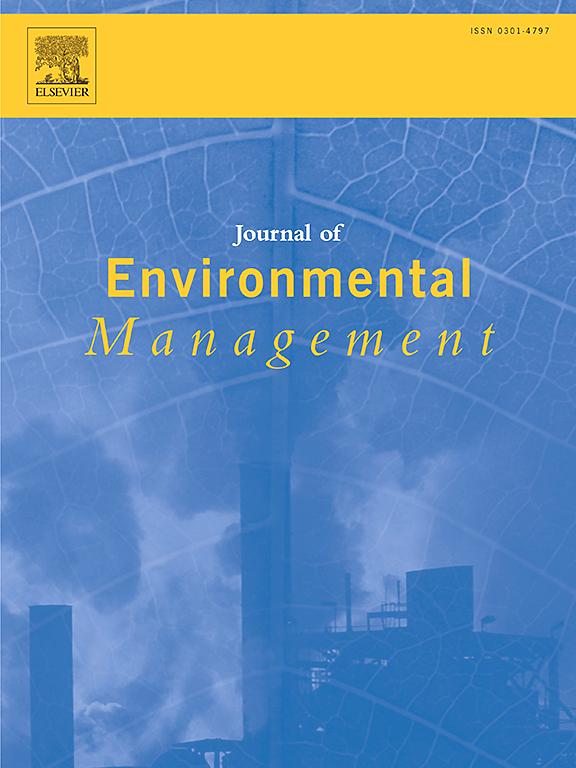Innovating tomorrow: Industry 5.0's role in shaping the workforce and socio-economic development in the sustainable energy transition era
IF 8
2区 环境科学与生态学
Q1 ENVIRONMENTAL SCIENCES
引用次数: 0
Abstract
The global transition to renewable energy is not merely a technological shift but a profound socio-economic transformation, necessitating a reimagining of workforce roles, skill development, and industrial adaptation. However, existing studies on Industry 5.0 have primarily focused on technological advancements, such as the integration of smart systems, IoT, and AI, without adequately addressing their role in workforce transformation and skill enhancement. In terms of socio-economic development, research has largely emphasized how Industry 5.0 technologies drive innovation, with little focus on how they can be harnessed for broader socio-economic growth. Additionally, methodological gaps exist, as prior studies have not comprehensively employed an integrated decision-making framework to prioritize and structure strategic workforce interventions. Addressing these gaps, this study explores and ranks key strategies for leveraging Industry 5.0 to enhance workforce capabilities and socio-economic progress. The Best-Worst Method (BWM) is utilized to determine the relative importance of these strategies, while Interpretive Structural Modelling (ISM) is applied to analyze their interdependences. MICMAC analysis further categorizes strategies based on their driving and dependence power, culminating in developing a strategic roadmap through integrating ISM results with the Interpretive Logic-Knowledge Base matrix (ILB). The findings underscore the crucial roles of "Policy Governance and Community Engagement" and "Skill Development and Educational Innovation" in facilitating an inclusive and effective energy transition. By offering a structured framework, this study provides actionable insights for policymakers to design targeted workforce reskilling initiatives, develop inclusive industrial policies, and foster public-private partnerships to accelerate the transition to renewable energy.
全球向可再生能源的转型不仅是技术上的转变,也是一场深刻的社会经济变革,需要重新认识劳动力的角色、技能发展和产业调整。然而,现有的工业 5.0 研究主要关注技术进步,如智能系统、物联网和人工智能的集成,而没有充分探讨它们在劳动力转型和技能提升方面的作用。在社会经济发展方面,研究主要强调工业 5.0 技术如何推动创新,而很少关注如何利用这些技术促进更广泛的社会经济增长。此外,由于以往的研究没有全面采用综合决策框架来确定劳动力战略干预措施的优先次序和结构,因此在方法上存在差距。针对这些差距,本研究探讨了利用工业 5.0 提高劳动力能力和社会经济进步的关键战略,并对其进行了排名。最佳-最差法(BWM)用于确定这些战略的相对重要性,而解释性结构建模(ISM)则用于分析它们之间的相互依存关系。MICMAC 分析根据战略的驱动力和依赖力对战略进行进一步分类,最终通过将 ISM 结果与解释性逻辑-知识库矩阵 (ILB) 相结合,制定出战略路线图。研究结果强调了 "政策治理与社区参与 "和 "技能发展与教育创新 "在促进包容而有效的能源转型中的关键作用。通过提供一个结构化框架,本研究为政策制定者设计有针对性的劳动力再培训计划、制定包容性产业政策以及促进公私合作伙伴关系提供了可操作的见解,以加快向可再生能源的过渡。
本文章由计算机程序翻译,如有差异,请以英文原文为准。
求助全文
约1分钟内获得全文
求助全文
来源期刊

Journal of Environmental Management
环境科学-环境科学
CiteScore
13.70
自引率
5.70%
发文量
2477
审稿时长
84 days
期刊介绍:
The Journal of Environmental Management is a journal for the publication of peer reviewed, original research for all aspects of management and the managed use of the environment, both natural and man-made.Critical review articles are also welcome; submission of these is strongly encouraged.
 求助内容:
求助内容: 应助结果提醒方式:
应助结果提醒方式:


